Date Posted: 11.17.2022
As part of our commitment to use our skills as designers and integrated thinkers to support social equity, Mithun provides pro-bono design services to underserved communities by partnering with local grassroots organizations. In the last 15 years, Mithun has donated more than 10,000 hours of pro-bono design to more than 70 community-serving projects.
These efforts address a wide range of community goals and initiatives: tackling housing affordability, transforming a decommissioned Atlanta detention center into community space, creating multi-use outdoor learning spaces for a rural school district, a community food pantry in San Francisco’s Mission Bay neighborhood, and a vibrant mural that activates an urban neighborhood alley.
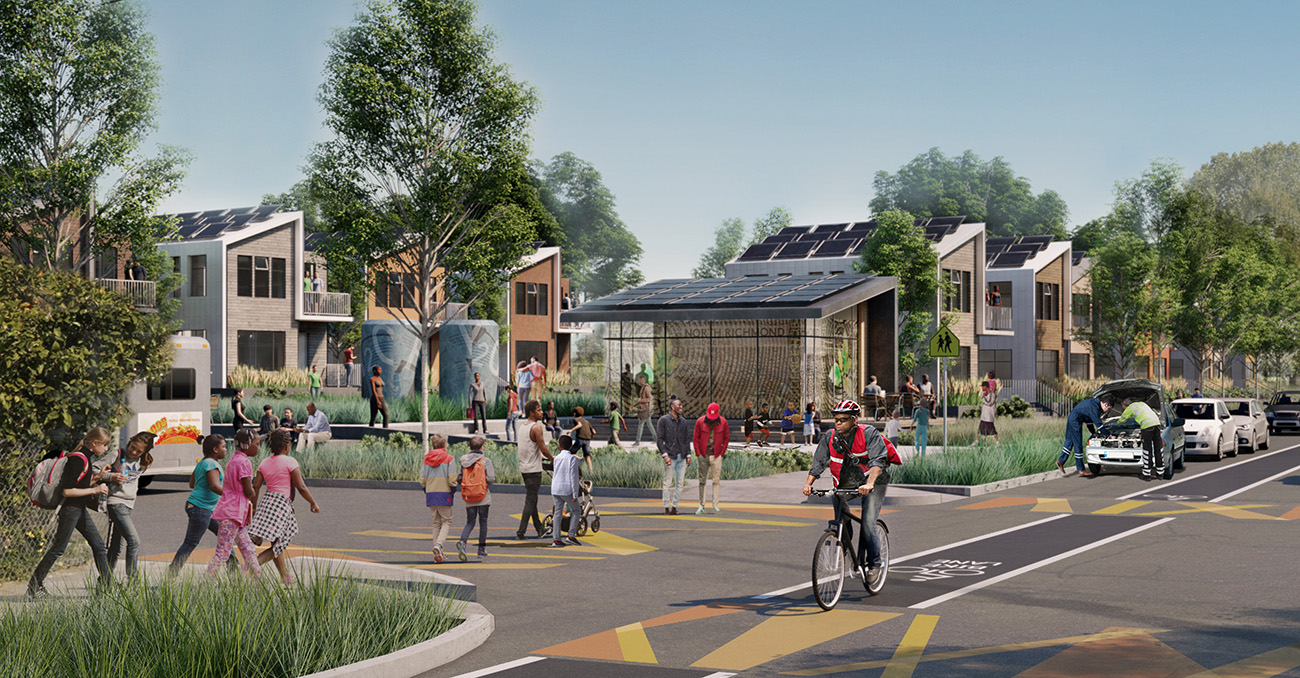
RICHMONDLAND ECO-VILLAGE
RichmondLAND envisions a world where homegrown Richmond and West Contra Costa County residents can mobilize to create, finance, build, and sustain affordable housing and community development projects that fulfill long standing community needs and aspirations.
The Eco-Village is the first project for RichmondLAND, an emerging developer. Over a year of participatory design led to the co-creation of an innovative community development project that builds upon North Richmond’s legacy of resilience. The village addresses neighborhood concerns around displacement and creates new permanently affordable housing units, aligning with local community revitalization initiatives that bring together positive environmental and social outcomes. The project uses ‘affordability by design’ to empower homeownership through a community land trust (CLT) or cooperative housing model.
A Mithun team led by Hilary Noll, Antonio Pares and Mariel Steiner studied the possibilities of the site along with community members, helped illustrate the resulting vision, and continues to assist with development project management, including due diligence, entitlement and scheduling. We are proud to lend our skills and support to bring this pioneering model of housing equity into reality.
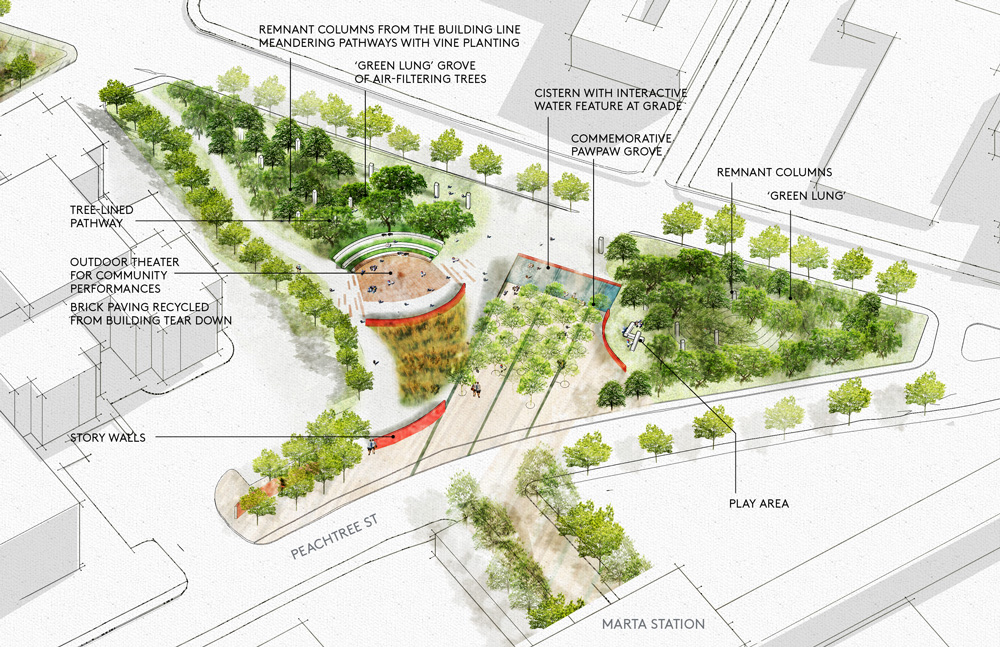
ATLANTA CENTER FOR EQUITY
Mithun has also provided pro bono landscape architecture services for Atlanta’s Center for Equity, a ground-breaking concept for ending mass incarceration that aims to transform a decommissioned detention center into a community space focused on social services, job training and restorative justice.
The design concept incorporates a commemorative park with story wall, outdoor theater, water features and a cistern to capture and reuse storm water for irrigation. A Paw Paw tree grove commemorates American history, highlighting the role the native tree fruit served as sustenance for enslaved people escaping along the Underground Railroad. Tim Mollette-Parks is leading Mithun’s team in collaboration with Designing Justice + Designing Spaces.
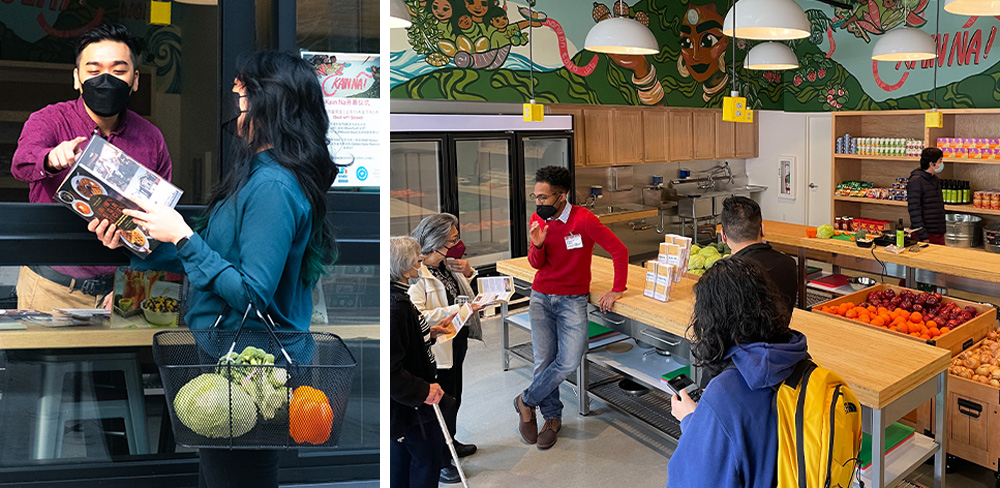
KAIN NA FOOD HUB
Healthy, affordable grocery options remain a challenge in many neighborhoods. “Kain Na!” means “Let’s Eat!” in Filipino, and is the name appropriately given to the new community food hub that will occupy a ground-floor space in the Mithun-designed 626 Mission Bay Blvd affordable housing community. Our pro bono design team, led by Melissa Perkinson and Steve Duncan, helped envision the space, complete the design and obtain building permits.
Now complete, Kain Na Food Hub serves low-income Mission Bay households with fresh, healthy groceries at convenient hours. In partnership with UC San Francisco and local schools, Kain Na also provides family-friendly and interactive programming focused on nutrition, health education and cooking demonstrations. The walls of Kain Na display a changing collection of art, creating one of the first locally operated galleries in the Mission Bay neighborhood. It will be a place where people feel at home, celebrate diversity and community, honor traditions of people of color and indigenous communities, and swap stories and recipes for years to come.
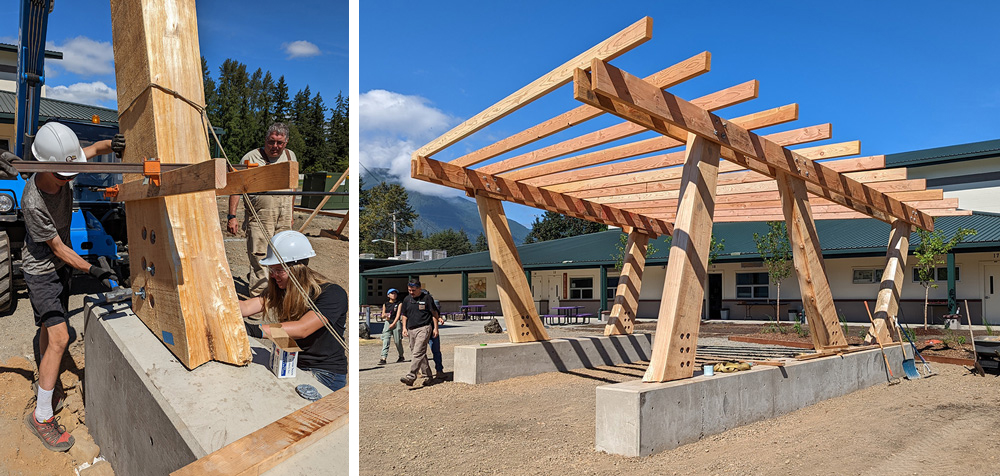
QUILCENE SCHOOL DISTRICT OUTDOOR LEARNING CENTER
This past summer, Mithun joined forces with local community members and diverse industry partners to transform an existing bus barn into an Outdoor Learning Center and create a new timber pavilion for school and community use in Quilcene, a small town on Washington’s scenic Olympic Peninsula. Our team worked hand-in-hand with students, staff and community members throughout the design process and build sessions to optimize learning and community benefit within the built project—expanding outdoor learning opportunities for students, housing a student maker space, hosting the community Saturday farmer’s market, supporting sports ticket sales and concessions for the adjacent community fields, and serving as a hub for the annual Quilcene Fair and Parade.
In all, the design/build effort inspired and organized by OAC Services leveraged more than $600,000 in donated goods, services and labor from 50 businesses. The Mithun team included Brendan Connolly, Séamus Kelly, Christian Runge, Andrew Walker, Sterling Bradby and Katja Peterson, and their wonderful families.
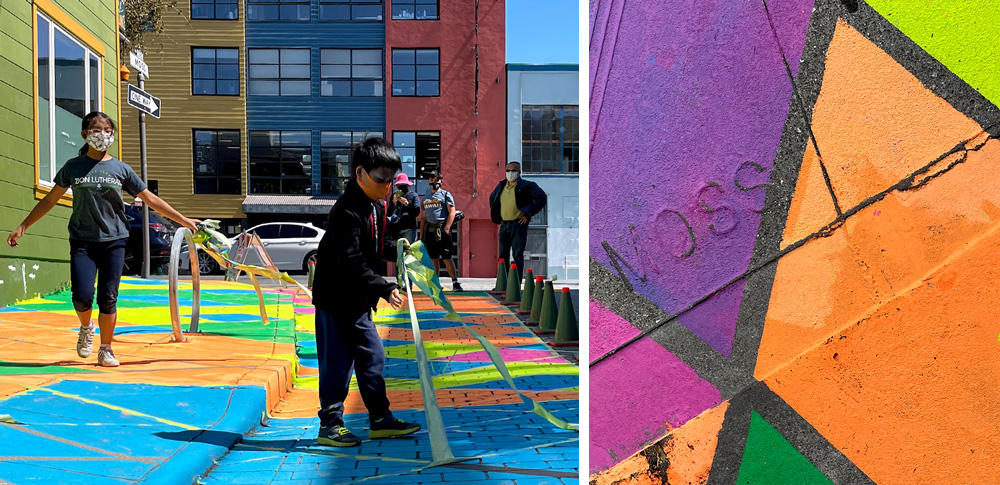
MOSS METAMORPHOSIS
In San Francisco, the South of Market’s network of residential alleys are an important respite from the wide, fast-moving, one-way main thoroughfares, and a resource for households in the neighborhood. As part of their work on a model for community-led alleyway improvements throughout the City, a Mithun team led by Tim Mollette-Parks, Mariel Steiner and Hyunch Sung volunteered with the San Francisco Parks Alliance and neighbors to paint a temporary sidewalk mural at the site of the future Moss Street Eco-Zone. Located in the city’s Filipino Cultural Heritage District, the mural design alludes to forthcoming public realm improvements that use a traditional weaving motif. The re-envisioned Moss Alley will host rainwater harvesting, stormwater treatment, habitat support, and social gatherings of all kinds.
In addition to assisting with the design of the Moss Street Eco-Zone, Mithun helped the Parks Alliance imagine unique ways to activate the site in the near-term while also help residents understand the size and extents of the future Eco-Zone.